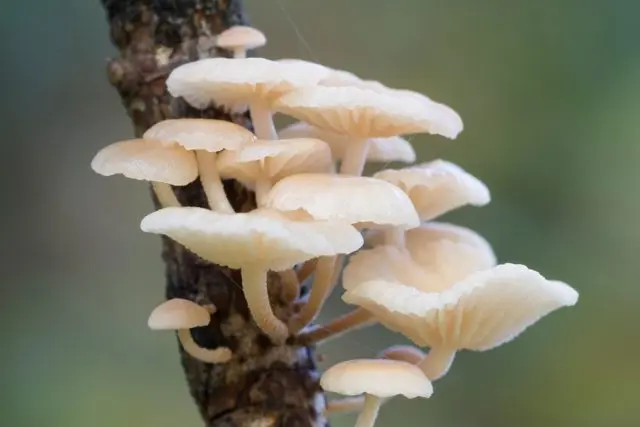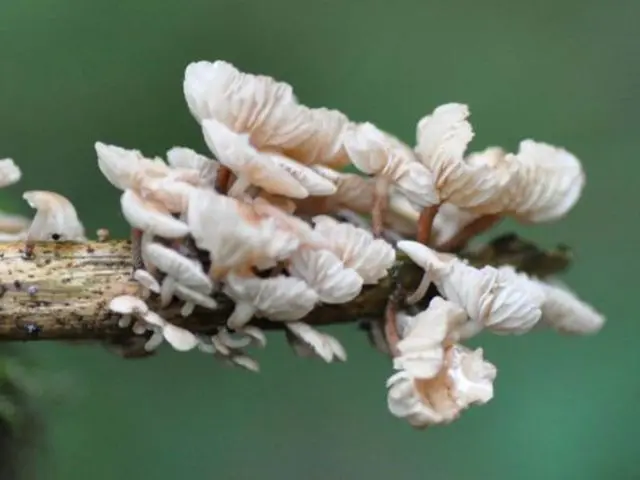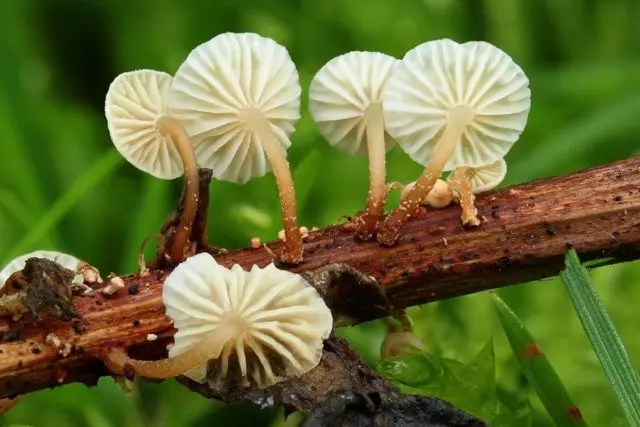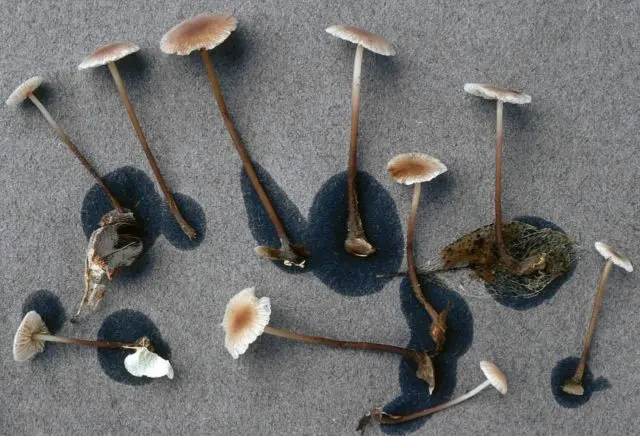Contents
Branch rotten or branch marasmiellus, Latin name Marasmius ramealis. The fungus belongs to the Negniuchnikov family.

The lamellar non-rottor consists of a central leg and a cap
What does a twig rot look like
Small fragile fruiting bodies with a solid color and a darker fragment in the central part of the cap. The color is creamy with a pinkish tint, does not change during the entire growing season.

In wet weather, the surface is slightly slimy
Cap Description
The shape changes during the growing season, in young specimens it is round, convex, and regular in shape. Then a recess appears in the center, the hat becomes prostrate with concave wavy or even edges.
External characteristic:
- diameter in mature specimens within 1,5 cm;
- the surface is silky glossy, along the edge with slight radial ribbing;
- spore-bearing layer is white with a pink tint;
- the plates are free, thin, rarely located; when the spores ripen, they do not change color.
The pulp is white, monophonic, thin and fragile, the structure is springy.

Young mushrooms are all the same and proportional shape
Description of the leg
The leg is cylindrical thin central. If the accumulation of fungi is compact, it may be curved in the central part. In single specimens, upright. The structure is fine-fibrous, fragile, the middle is hollow. The surface is colored the same as the upper part of the fruiting body, perhaps a shade darker near the mycelium.

The surface of the stem is covered with flaky segments
Where and how to grow
The twig rot is common in Our Country throughout the European part, Primorsky Krai, Siberia and the Caucasus. Saprophytes grow on decaying wood, mainly on branches, less often on stumps in a damp shaded place. Fruiting is long – from June to the onset of winter. Forms dense colonies, occupying vast areas, single specimens are almost never found.
Is the mushroom edible or not?
Due to the small size and fine structure of the fruiting body, it does not represent nutritional value.
There are no toxins in the chemical composition, but the twig rot is a little-studied species, so its use is undesirable.
Twins and their differences
Outwardly, the oak garlic clover looks like marasmiellus twig. The fruit body is small in size, but the color is darker with a fawn tint and a brown fragment in the center of the cap. Grows on leaf litter or woody debris, mainly under oak trees. View conditionally edible.

Mushroom with a strong garlic odor, it is used as a condiment
Conclusion
The twig rot is a small mushroom that grows on fallen branches or decaying stumps. Due to the structure of the fruiting body and the small size of the nutritional value, the non-rotten twig is an inedible species. It bears fruit in compact groups from the beginning of summer until the onset of frost.









